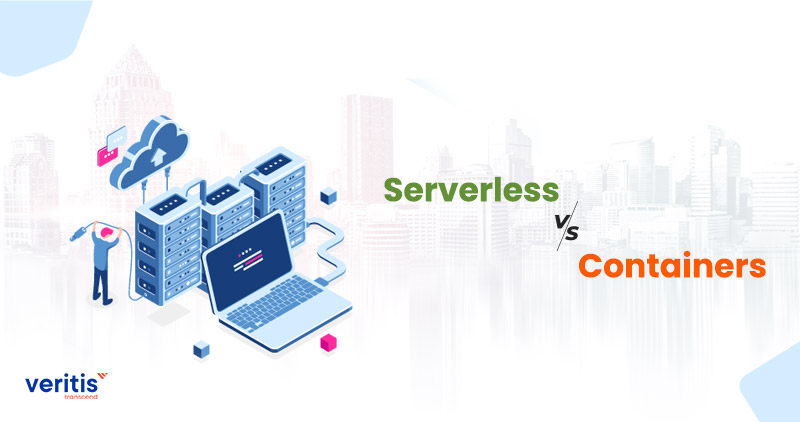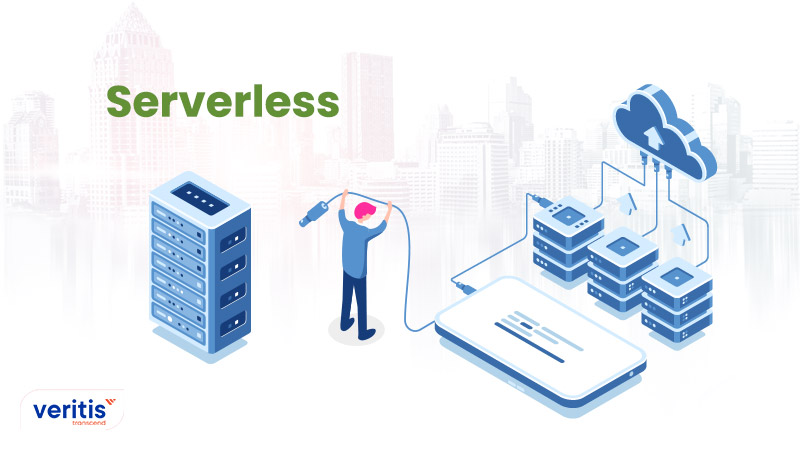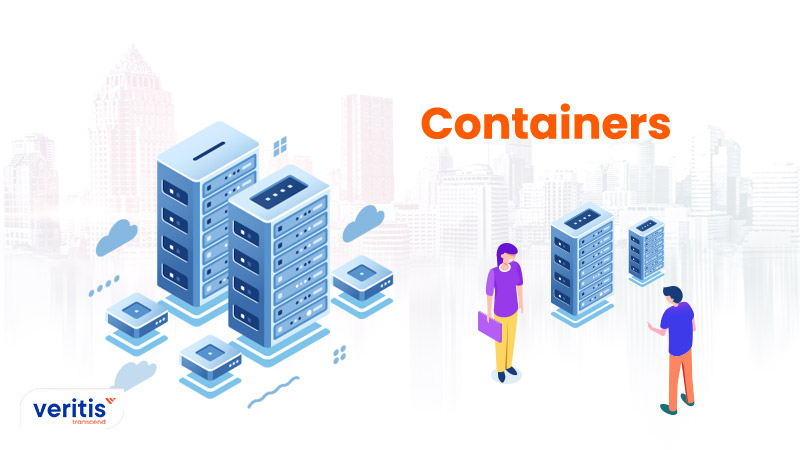
In modern technology, Serverless (Function as a service (FaaS)) and Containers (Container Orchestration) are two of the biggest DevOps buzzwords, which signify efficient app deployment. Touted as cost-effective architectures, they do have some common features but are not interchangeable technologies. While they are different in several aspects, both models reduce overhead for cloud-hosted web applications.
Serverless and containers are two of the best technologies used by the DevOps team. The DevOps team requires extensive resources to deliver deliverables, containers, and serverless infrastructure, which are picking up pace in the market. According to the IBM survey, serverless adaptation is increasing rapidly.
Nearly 68 % of techies not using serverless technology admitted they are ready to adopt a serverless approach in the upcoming years. In a recent analysis by MarketsandMarkets, the serverless architecture experienced a growth of USD 7.6 billion in 2020, which will grow to USD 21.1 billion in 2025.
Talk to Our Cloud Service Consultant
Useful Link: Business Benefits of Cloud Computing Migration
Other surveys echo similar sentiments for containers. Gartner predicted that 70% of organizations will run containerized applications in 2023. An analysis by IBM revealed that 61% of users had used containers for half of their new applications in the past two years.
Your DevOps team can choose which one is based on the unique requirements. Choosing between serverless infrastructure or containers is a very tough decision. Our Veritis team will guide you to the best solution for your application in the cloud platform. Before delving deep into the details, let’s learn about serverless computing and container services.
Serverless

The term serverless might be confusing for some, but it doesn’t imply that your code shall operate without a server. Serverless is all about building and running applications without managing their servers. Put another way, users don’t need to get involved with server management.
In serverless architecture, enterprises don’t have to worry about the underlying infrastructure. The organization can focus on other areas as the serverless setup wicks away various bothers, which may range from maintenance to capacity constraints, as the cloud vendor provides the back-end services.
Any enterprise that acquires serverless for its backend services is charged based on its requirements. It doesn’t have to pay extra money for idle resources or unused space. Simply put, this payment model is based on a ‘pay-as-you-go ‘system. This model reduces the cost of deploying applications instead of providing an auto-scale mode in serverless computing.
Useful Link: Benefits of Implementing Cloud-based Disaster Recovery
Containers

Containers are the standard unit of software that packages the application code, along with its libraries, dependencies, and configuration files, into a single object. In container services, the application runs quickly anywhere, in any environment, be it on the cloud platform, desktop, or traditional IT.
Container technology is the best way for developers to focus only on application logic, while the operations team can concentrate on managing and deploying the application instead of focusing on specific details like configuration and software versions.
In the current era, containers are one of the most trending topics in the tech world, especially security. The top tech companies such as Microsoft, and Facebook use containers regularly. For instance, Google relies on containers (using ‘cgroups’ containers) for most of everything. The US tech giant runs 2 billion containers weekly (3000 started per second). Almost everything runs in a container at Google, from Search and YouTube to Gmail.
Containers first appeared decades ago, with versions like Solaris Containers, AIX Workload Partitions, and FreeBSD Jails. Most developers in 2013 will relate to Docker when containers gained popularity.
Useful Link: Cloud Automation: Services, Tools and Business Benefits
Let’s dig deep into the major differences between serverless and containers
| Details | Serverless | Containers |
| Supported Host Environment | Mostly, clouds like Azure functions and AWS Lamba | It can run on certain Windows versions and Linux servers |
| Supported Languages | Supports a few programming languages like C#, Node, Java, and Python | Any Virtual language |
| Isolate Workloads | Yes | Yes |
| Running Locally | Hectic will operationalize outside a public cloud platform. | It can run easily on a developer’s workstation or local data center |
| Cost | Based on the respective Cloud platform’s billing model | Orchestrators and container engines are open sources, and they can be used for no cost in a local environment |
| Stateful functions/app | No (in most cases) | Yes |
| Support Persistent services | No | Yes |
| Availability | It can run for a long period | It can run for a short period |
| Pros | Reduces maintenance and administration burden, zero cost for idle time, microservice nature, autoscaling, zero administration, pay per execution, and faster time to market | Reduces maintenance and administration burden, zero cost for idle time, microservice nature, autoscaling, zero administration, pay per execution, and faster time to market |
| Cons | Cold starts, Black box environment, complex apps are hard to build, no standardization, vendor lock-in | Required manual intervention, running costs, hard to get the start, administrative work, scaling is slower |
| Maintenance | The vendor will take care of software updates and manage servers. | Teams will take care of hardware updates, patches, and maintenance. |
| Testing | It is difficult to test the function on a serverless environment as backend services are complex to replicate on local machines | It can done easily on local machines to test the function |
| Deployment | The vendor will take responsibility for deploying a function | The developer will take the responsibility to deploy the container services |
| Development Times | The vendor will take care of all things, and the organization only needs to write the code | Additional work is required for containers, like building the image and moving to the registry |
| Monitoring | Vendor tools will provide monitoring capabilities to the serverless | We need to install a monitoring tool in containers |
| Scaling | The Vendor does serverless scaling | The application team does container scaling |
Conclusion

On a concluding note, serverless and containers are considered kings in the IT field in the current market scenario. To get the best results from adopting serverless, IT Pros must decide what platform they need to run their application and what programming language they must choose for their teams. Most application development environments can work with different types of programming languages.
Containers can deliver the highest-quality software product to their customers by streamlining the remote deployment and local development processes, which will help them execute more efficiently. Serverless has its own advantages, which are enticing enough for clients who have their hands full.
Useful Link: Cloud Monitoring: Services, Solutions and Tools
When comparing serverless and containers, it’s best to think that both technologies complement each other. Instead of undertaking a tightrope walk, getting the best of both worlds may be wise. Most tech industries will likely use both trending technologies to deliver the same application.
However, this may not always be required, as an organization’s unique needs decide which way to go. This may be tough for many cloud and DevOps solutions, which are comprehensible to most. This is where Veritis steps in. The trusted tech partner for companies of various scales, Veritis provides cost-effective solutions that are amplified in quality and robustness. Become future-proof by partnering with Veritis.
Explore Cloud Services Talk to our Cloud Computing Expert
Additional Resources: